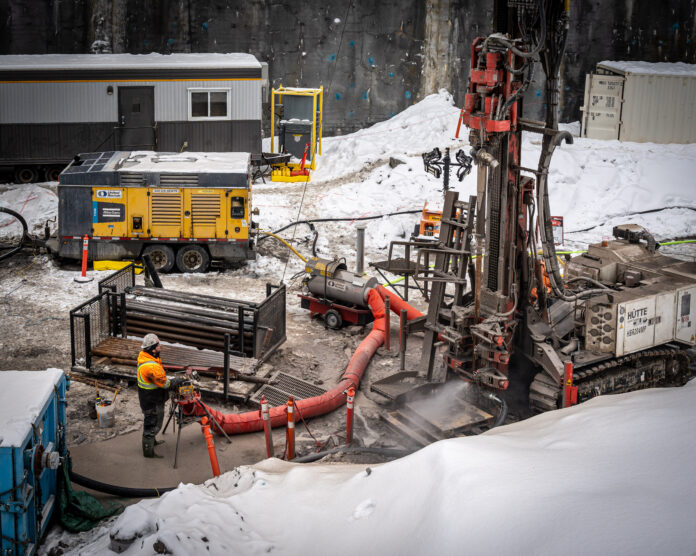By Mark Buckshon
Ottawa Construction News staff writer
How is work proceeding on Canada’s largest and most complex heritage renovation project?
The answer, say representatives from Public Services and Procurement Canada (PSPC) and contractors and specialist trades involved in the massive $4.5 to $5 billion Centre Block project on Parliament Hill, is that it is moving along well, with the building scheduled to reopen in 2032.
In fact, officials are so confident about the project that they schedule regular media tours, where reporters and photographers are provided safety gear and taken through rooms that – when they return to their original function – are at the centre of Canada’s parliamentary democracy.
For several years, however, the building is an intensive construction site, as the joint venture of EllisDon and PCL, with a collection of subtrades and suppliers, juggle the challenges of preserving the building’s heritage as they modernize it to current building standards.
I had the opportunity to join one of these media tours in July.
Rob Wright, an assistant PSPC deputy minister, led the tour, along with other department and specialist representatives.
The project involves some key components, including a new visitors’ centre and entrance/support area underground on Parliament Hill just in front of the existing structure.
The idea is that the new centre will be almost invisible to the public. Despite some major redesigns and new features within the existing Parliament Hill structure, when work is completed viewers will need to strain their eyes to see any visible external changes.
Not that there isn’t a lot going on. Officials say approximately 40,000 truckloads of bedrock have been removed in the visitor centre area excavation. When completed, the centre will set the framework for visitor and official traffic flow management. Once visitors go through security screening, they can visit interpretative exhibits or prepare to start their Parliament Hill tours.
Two existing (and largely unused) interior courtyards will be turned into glass-covered access points, allowing visitors access to visitor galleries, without interfering with parliamentary business.
Meanwhile, the existing building interior is being modernized to preserve and enhance its heritage.
Guides explained how specialists are working on restoring 20,000 or more heritage assets including 250 stained glass windows, sculptures, painting, hand-painted linen, light fixtures and more. Many items have been carefully removed and catalogued; while others are protected by plywood coverings as contractors work on the building structure.
The main building structure is getting major seismic enhancements. To do this, contractors need to strengthen existing flooring and drill approximately 800 temporary posts to support the building before the basement is excavated.
“Once excavation is complete, 500 base isolators will be installed that will essentially work as shock absorbers in case of a seismic event,” PSPC says in an infographic. “This incredible engineering feat will be done while keeping the 92.2 metre Peace Tower standing over top of it.”
Contractors will dig 92 boreholes, largely under the visitors’ centre, to create an energy-savings geothermal system that to drastically reduce heating and cooling energy requirements and emissions. Grey water recycling will also cut waste – the objective is to use 75 per cent less energy and 50 per cent less water than before the renovations.
 Parliamentarians will have access to non-public areas within the visitors’ centre and three new floors above the Hall of Honour – the building’s main corridor.
Parliamentarians will have access to non-public areas within the visitors’ centre and three new floors above the Hall of Honour – the building’s main corridor.
Electrical, plumbing and communications systems – all modernized to current standards – will be hidden behind the restored traditional facades, almost invisible to the public and parliamentarians.
As the tour proceeded, we were invited to climb scaffolding to the point we could touch the Senate’s ceiling with our hands – the original elements still in plain view, as the renovation hasn’t gotten too far along in this room.
Meanwhile, in the House of Commons, we could see a plywood covering where the Speaker sits. The parliamentary seats were gone; they will be replaced by a new seating arrangement that will allow for an increasing number of parliamentarians. New lobbies and work areas will be installed as existing ones are modernized.
Wright said parliamentary offices would be rebuilt to a more standard size – the effect will be there will be fewer offices within the Centre Block, but Members of Parliament and Senators will be able to use additional workspaces when they are in the building and away from their private offices.








